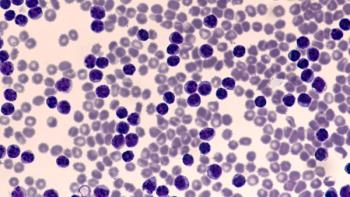
Five Food Allergens Pharmacists Should Know
Food allergens can be present in a variety of medications, but they don't always merit a switch in therapy.
As pharmacists experience expanding roles on the healthcare team, attention to hypersensitivities remains a key responsibility when directing drug therapy. While the active pharmaceutical ingredient is to blame for a lot of the time, patients can also experience reactions and intolerances to excipients present in drug formulations. Providers are typically concerned with drug allergies alone, but sometimes food allergies can also have a role in drug selection. A discussion with the healthcare team, alongside professional judgment, will determine the best course of action for each patient.
1. Hypersensitivity: Pork
Drugs of interest: Heparin; the low molecular weight heparins dalteparin and enoxaparin
These drugs are contraindicated in hypersensitivity to pork products because they are derived from heparin in porcine intestinal mucosa.1
2. Hypersensitivity: Peanut, soy
Though peanut and soy allergies are different, the allergens that trigger hypersensitivity reactions are in the same Leguminosae and can be subject to IgE cross-reactivity binding. However, this does not always indicate clinical cross-reactions.2,3
Allergen: Peanut oil
Drugs of interest: Dimercaprol injection, progesterone capsules, valproic acid capsules4
Allergen: Soy oil
Drugs of interest: Clevidipine, fat emulsions, propofol4
Allergen: Soy lecithin
Drug of interest: Atrovent and Combivent metered dose inhalers4
Allergen: Soy phosphatidylcholine
Drugs of interest: Amphotericin B liposome, doxorubicin liposome4
3. Hypersensitivity: Egg
Allergen: Egg protein
Drugs of interest: Yellow fever vaccine, influenza vaccine4
The measles, mumps, and rubella (MMR), and rabies vaccines are incubated in chick embryo fibroblast cultures, and thus contain virtually no egg protein.4
The yellow fever, and influenza vaccines may contain higher amounts of egg protein. Twenty-seven studies support the CDC’s Advisory Committee on Immunization Practices (ACIP) recommendation that persons who report having had even severe reactions to egg can still receive influenza vaccine formulations that are appropriate for their age and health status. However, if a severe reaction occurs in response to administration of an influenza
Allergen: Egg lecithin, egg phospholipids
Drugs of interest: Emulsions that include fat emulsions, clevidipine, and propofol; tablets of ibuprofen, diphenhydramine, and rosiglitazone4
4. Hypersensitivity: Fish
Allergen: protamine
Drugs of interst: Protamine injection, NPH insulin4
Protamine is generally used for two purposes: to reverse the effects of heparin, and to increase the duration of action for insulin. Though protamine is obtained from salmon testes, it appears unrelated to actual fish allergy.
5. Hypersensitivity: Sesame
Allergen: sesame oil
Drugs of interest: Dronabinol capsules; estradiol, progesterone, nandrolone, and testosterone injections; haloperidol decanoate and fluphenazine decanoate injections4
ADDITIONAL POINTS
Three other very common excipients for pharmacists to be aware of are gelatin,
The above lists are not all comprehensive. For example, protamine is a specific allergen, and does not necessarily encompass all fish allergies. Clinicians should ensure they’re consulting the appropriate clinical resources as well as the package inserts of individual drugs.
References
- Lovenox [package insert]. Bridgewater, NJ: Sanofi-aventis U.S. LLC; 2017.
- Cabanillas B, Jappe U, Novak N. Allergy to Peanut, Soybean, and Other Legumes: Recent Advances in Allergen Characterization, Stability to Processing and IgE Cross-Reactivity. Mol Nutr Food Res. 2018 Jan;62(1). doi: 10.1002/mnfr.201700446. Epub 2017 Nov 3.
- Al-Ahmed N. Aldoesifi D, Vadas P. Peanut allergy: an overview. Allergy Asthma Clin Immunol. 2008 Dec 15;4(4):139-43. doi: 10.1186/1710-1492-4-4-139. Epub 2008 Dec 15.
- Kelso JM. Potential food allergens in medications. J Allergy Clin Immunol. 2014 Jun;133(6):1509-18; quiz 1519-20. doi: 10.1016/j.jaci.2014.03.011.
- Flu Vaccine and People with Egg Allergies. Centers for Disease Control and Prevention. https://www.cdc.gov/flu/protect/vaccine/egg-allergies.htm. Accessed 26 Jun 2018.
Newsletter
Stay informed on drug updates, treatment guidelines, and pharmacy practice trends—subscribe to Pharmacy Times for weekly clinical insights.




















































































































































































































